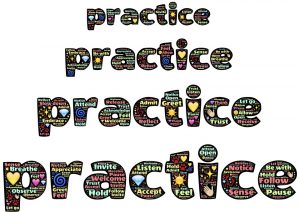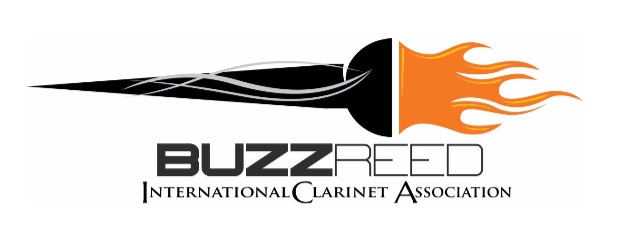Part 3: Teaching and the Learning Model, and Wrap-up
by Jessica Pollack
In the last post we saw the best way to practice:
- Knowing what “correct” looks like
- Being able to tell what is different (and the same) between what you have and what you defined as “correct”
- Identifying what is preventing you from reaching “correct”
- Knowing exactly how to change what is preventing you from being “correct”

What this model says about teachers
To be clear, you can absolutely learn all of that by yourself. But as we saw in the model, the fastest way to improve requires knowledge of what is causing the problems and how to fix them. Improvement happens more quickly if you don’t have to spend time figuring out the source of the problem and you can go straight to fixing it. That is, it goes faster with a teacher.
If we think of learning a skill as climbing a mountain, we need good climbing technique (the practice model above), hard work and time. But, as Dr. Ericsson points out in “Peak,” you will always climb the mountain faster and more easily if you have a map or a guide — and that guidance is the difference between purposeful practice and deliberate practice.
In climbing a mountain, you might follow a path upwards only to realize at some point it is blocked, and you may have to retrace some of your steps to try a different path to the top. Similarly, have you ever worked on one aspect of your playing to fix a problem only to realize the solution was really somewhere else? For example, maybe you do lots of exercises to increase your tonguing speed and stamina, like practicing bursts or endurance at different metronome markings. But if you don’t have a good tonguing technique underneath it (e.g. keeping movements small and at the tip of the tongue), you will hit a physical limit much sooner no matter how much you try to muscle out more speed. In that case, you are addressing the wrong aspect of a problem, and you may not know until days, weeks or even years into that technique. You can absolutely fix that, but it might slow you down.
Luckily, we stand on the shoulders of generations of musicians and teachers who have found solutions to many technical and musical problems. They have created maps and taught others the way so that we don’t have to repave the same paths. We can build on their knowledge rather than rediscovering it in each generation. That is the idea behind good private lessons or at least individual feedback from a music teacher or advanced friend. Immediate and accurate feedback from a teacher who knows how to answer the questions raised in the steps above is the fastest way to improve. That way you can spend time improving, not trying to understand how to improve. The teacher can also train students to give that feedback to themselves as they improve on their instruments.
You don’t have to be taught everything
Just because someone didn’t teach it to you doesn’t mean it’s wrong. Eventually you will get to a point where you can come up with your own exercises and ideas on fixing problems. The great players I know all use a combination of strategies they learned and strategies they made up on their own. All the exercises we learn had to be made by someone. That someone didn’t have any natural talent that you don’t also posses. And eventually, that someone will be you. As you continue to learn about your instrument you will be better at understanding and identifying the causes of problems, and you will be able to start creating solutions on your own. And you certainly don’t need a degree to do this.
If you aren’t good at this right away, that’s okay, though. Like the chess players in the first post, some students may have good instincts about what to practice right away and some may not. But eventually we all learn enough to come up with our own ways of practicing that don’t have to come directly from teachers or books just as chess Grandmasters learn to out-strategize any opponent. And if you are thinking critically and evaluating along the way, that is likely something you can do with your current skill level so don’t be afraid to experiment!
Practicing vs Performing
I also want to point out that some teachers agree there are 3 different types of practice: conceptual, mechanical and performance. That is, one type of practice is to find your artistic concept (e.g. phrasing). Separately, you practice how to logistically execute that idea. And separately, you practice doing it on command in performance mode. The model above works for any type of learning. Note, though, that not all practice time goes to learning because you have to practice performing. When in performance mode, you don’t want to be distracted by evaluations or feedback about your playing (Bulletproof Musician gives a great intro to practicing performing). You need the ability to turn off feedback and focus on performing even though the evaluation process is key to the learning model.
But, we can evaluate our performance ability after the fact. Practice putting yourself in performance mode, record yourself and see how you do. When you are not performing exactly the way you practice (“correct”), go back to learning mode and use the model to evaluate why you don’t succeed in practice mode. Do you have trouble focusing, is there a technique issue or something else? You have to practice performing the same way you practice scales, a passage or any other musical skill.
Conclusion
This series serves as an introduction on how to practice, but also on why anyone can learn to practice and to play their instrument correctly. If you want more instruction on the correct way to practice, I recommend “Peak,” one of the biggest sources of Part 2, for anyone who has even a little bit of reading time to explore good practice methods. I also recommend signing up for the free mini course from Bulletproof Musician, which goes through this material a bit faster than a book and is more specific to musicians. There are also lots of blogs like www.hoopgains.com/blog that give more bite-size tips on practicing to your email. Anything science based about sport/performance or educational psychology is a great place to look for more details about the exciting field of practicing well. Don’t waste time and energy being miserable with bad practice strategies. All of this information should make practicing less confusing and more productive. It is difficult and exhausting, but when it works, practice is very rewarding and hopefully even fun!
Bonus
What if I don’t have the resource of a private teacher?
Immediate and accurate feedback with the guidance of a teacher is the most efficient way to learn. If you are serious about wanting to be one of the best in the world at something, you want to be working with a teacher as soon as possible to make that difficult journey that much more manageable. But remember that you have that amazing gift of a human brain and you have great potential to learn. The internet gives students of all locations access to teachers through video lessons, but if that is truly not available or affordable, there are continually more free resources (blogs, videos, etc.) that can help provide clues to problem solving until students have access to that immediate feedback. Remember, though a video can show you the right way, but it can’t give you feedback about how well you are following it. Continuing the mountain metaphor above, you can absolutely reach the top on your own, but the more guidance you have the easier it will be. For some students that immediate, accurate and precise feedback about their own playing may not happen regularly until college, and this post is not meant to discourage them or tell them it is too late to succeed. If that is you, be certain you make the most of the resources available in order to follow this model as closely as possible, and seek out and use feedback wherever possible. Ask more advanced players and music educators for help as often as you can. And when you get to somewhere with more resources, don’t waste any time by not learning efficiently. Again, we know from the last post that you are capable of learning and succeeding. Just be sure to be active and critical each time you hold your instrument so that you actually learn rather than just repeat.
Congratulations on making it to the end!
If you have any questions or comments feel free to reach out at [email protected] or check out what else I’m learning about at www.jessicapollackclarinet.com.
Happy Practicing!

Comments are closed.